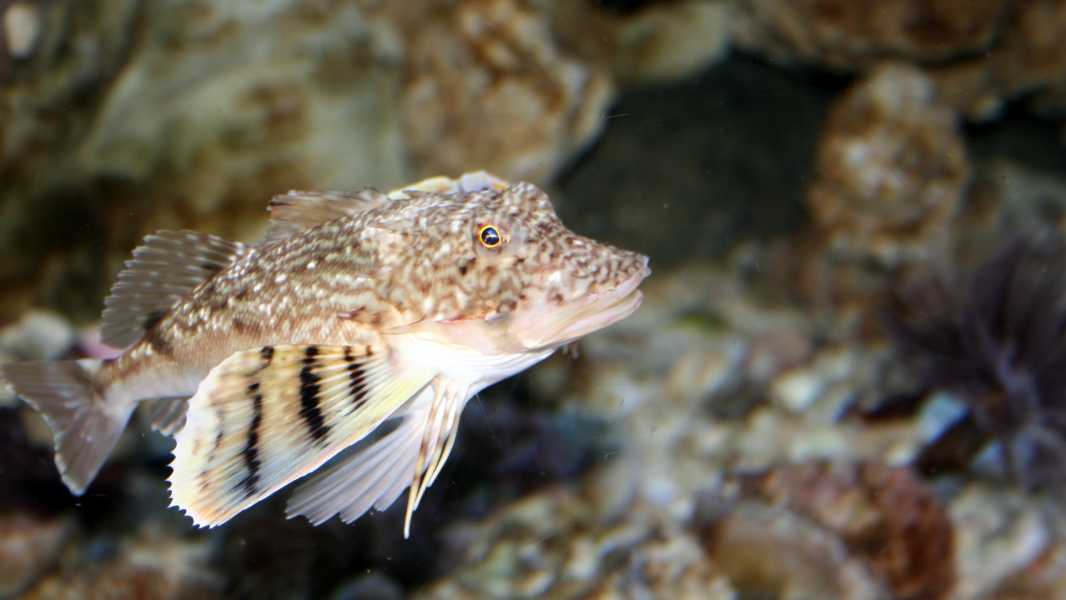
(Image courtesy of Kevin H. Knuth via Shutterstock)
Name: Northern Sea Thrush (Prionotus carolinus)
Habitat: Shallow waters of the western Atlantic Ocean, from Nova Scotia to Florida.
What it eats: shrimp, crabs, squid, worms and small fish.
Why it's impressive: Northern sea robins are unusual fish with large, spiny heads, bright blue eyes, two huge wing-like fins, and six crab-like limbs.
These tiny feet are what make sea robins especially unique. Other marine life follows these fish because they are excellent at finding and digging up buried food — but until recently, scientists didn’t understand what exactly makes northern robins such skilled hunters.
In two studies published in 2024, researchers found that the feet of northern sea robins function like tongues, allowing the fish to probe their environment in search of food.
“This is a fish that evolved legs using the same genes that make our limbs, and then repurposed those legs to find prey using the same genes that our tongue uses to taste food — pretty amazing,” said study author Nicholas Bellono, a professor of molecular and cellular biology at Harvard University.
Scientists have discovered that northern sea robins can find and dig up crushed mussels using papillae that cover their feet. Papillae are small sensory structures that in humans are located on the upper surface of the tongue. The researchers found that the papillae of northern sea robins contain taste buds and touch-sensitive neurons, allowing the fish to use their feet to taste the ground in search of food.
In one study, scientists raised northern sea robins from embryos in a lab to watch their legs develop. They found that the legs formed from the pectoral fins, separating from the other fin rays as they grew. The legs are controlled by separate muscles for locomotion at the base and are shaped like spades, which helps the fish dig.
The team found that while all sea robins have feet, not all of them are adapted for digging and tasting. “We were struck by how different the sea robins are in terms of the sensory structures on their feet,” said study co-author David Kingsley, a developmental biologist at Stanford University. “So the system shows multiple levels of evolutionary change, from differences between sea robins and most other fish, to differences between sea robins, to differences in things like structure, sensory organs, and behavior.”
However, the tongue feet of northern sea robins do not always lead to food. After northern sea robins dig up their dinner, the fish watching them often swoop in and steal their catch, in a phenomenon known as kleptoparasitism.

Hannah OsborneSocial LinksNavigationEditor
Hannah Osborne is the Earth and Animals Editor at Live Science. Previously, she spent several years as Science Editor at Newsweek. Before that, she was Science Editor at the International Business Times UK. Hannah holds an MA in Journalism from Goldsmith's, University of London.
Sourse: www.livescience.com





